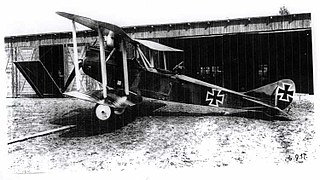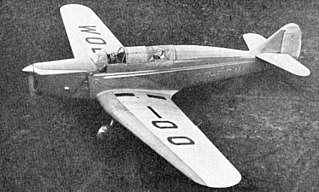
The Fairey Aviation Company Limited was a British aircraft manufacturer of the first half of the 20th century based in Hayes in Middlesex and Heaton Chapel and RAF Ringway in Cheshire that designed important military aircraft, including the Fairey III family, the Swordfish, Firefly, and Gannet. It had a strong presence in the supply of naval aircraft, and also built bombers for the RAF.

The Fairey Fox was a British light bomber and fighter biplane of the 1920s and 1930s. It was originally produced in Britain for the RAF, but continued in production and use in Belgium long after it was retired in Britain.

The Fairey Aviation Company Fairey III was a family of British reconnaissance biplanes that enjoyed a very long production and service history in both landplane and seaplane variants. First flying on 14 September 1917, examples were still in use during the Second World War.

The Slingsby Hengist was a British military glider designed and built by Slingsby Sailplanes Ltd. Like other British troop carrying gliders in the Second World War, it was named after military figures whose name began with H, in this case the Jute invader Hengist.

The SZD-45 Ogar (Hound) is a T-tailed cantilever high-wing monoplane of wooden, aluminium and fibreglass construction designed and manufactured in Poland.

The Fairey Firefly IIM was a British fighter of the 1930s. It was a single-seat, single-engine biplane of all-metal construction. Built by Fairey Aviation Company Limited, it served principally with the Belgian Air Force throughout the 1930s until the outbreak of World War II.

The Fairey Fawn was a British single-engine light bomber of the 1920s. It was designed as a replacement for the Airco DH.9A and served with the Royal Air Force between 1924 and 1929.

The Avions Fairey Belfair, also known as the Tipsy Belfair after its designer, Ernest Oscar Tips, was a two-seat light aircraft built in Belgium following World War II.
Avions Fairey was the Belgian-based subsidiary of the British Fairey Aviation that built aircraft for the Belgian government. It subsequently separated from the UK parent and became SONACA.

The Avions Fairey Junior, also known as the Tipsy Junior was a single-seat light aircraft built in Belgium following World War II.

The Jodel D.9 Bébé is a French single-seat ultralight monoplane designed by Jean Délémontez for amateur construction.

The Rumpler C.IV was a German single-engine, two-seat reconnaissance biplane. It was a development of C.III with different tail surfaces and using a Mercedes D.IVa engine in place of the C.III's Benz Bz.IV. The Rumpler 6B 2 was a single-seat floatplane fighter variant with a 120 kW (160 hp) Mercedes D.III engine built for the Kaiserliche Marine.

The Slingsby Type 61 Falke was a licence-built version of the Scheibe SF 25B Motor glider built by Slingsby Sailplanes. It entered service with the Royal Air Force for air cadet training as the Slingsby Venture.

The Scheibe SF-25 Falke is a German touring motor glider developed from the earlier Bergfalke glider by Scheibe Flugzeugbau. Since May 2006 the business has been run by Scheibe Aircraft GmbH.

The Fairey Primer was a production version of the Avions Fairey Tipsy M tandem seat single-engined basic trainer. Two production aircraft were completed in the late 1940s.

The Tipsy B was a small sports two-seat monoplane designed by Ernest Oscar Tips, and built in both Belgium and the UK. A total of 42 was built, and a few are still flying.

The Tipsy S.2 was the production version of the Tipsy S, a single seat, low wing sports monoplane designed by Ernest Oscar Tips in Belgium in the mid-1930s. It was produced in both the Belgium and the UK.
The Sonaca Group, short for Societe Nationale de Construction Aerospatiale is a Belgian aerospace company. The company has subsidiaries in the United States, Canada, Mexico, Brazil, China, Romania, and Sri Lanka. In 2018, the Sonaca Group's operating revenues amounted to $900 million. The Sonaca Group employs 4,630 workers as of 2018. 92.604% of the company is owned by SRIW S.A., 7.393% is owned by SFPI S.A. and 0.003% is owned by SABCA S.A.

The Avid Flyer is a family of American single engine, high-wing, strut-braced, conventional landing gear-equipped, two seat light aircraft designed for kit construction in the 1980s. Its several variants sold in large numbers. In 1987 a Flyer became the first ultralight to land at the North Pole.
Ernest Oscar Tips was a Belgian aircraft designer, who co-founded the Fairey Aviation Company in 1915 and its Belgian subsidiary Avions Fairey in 1931.

















